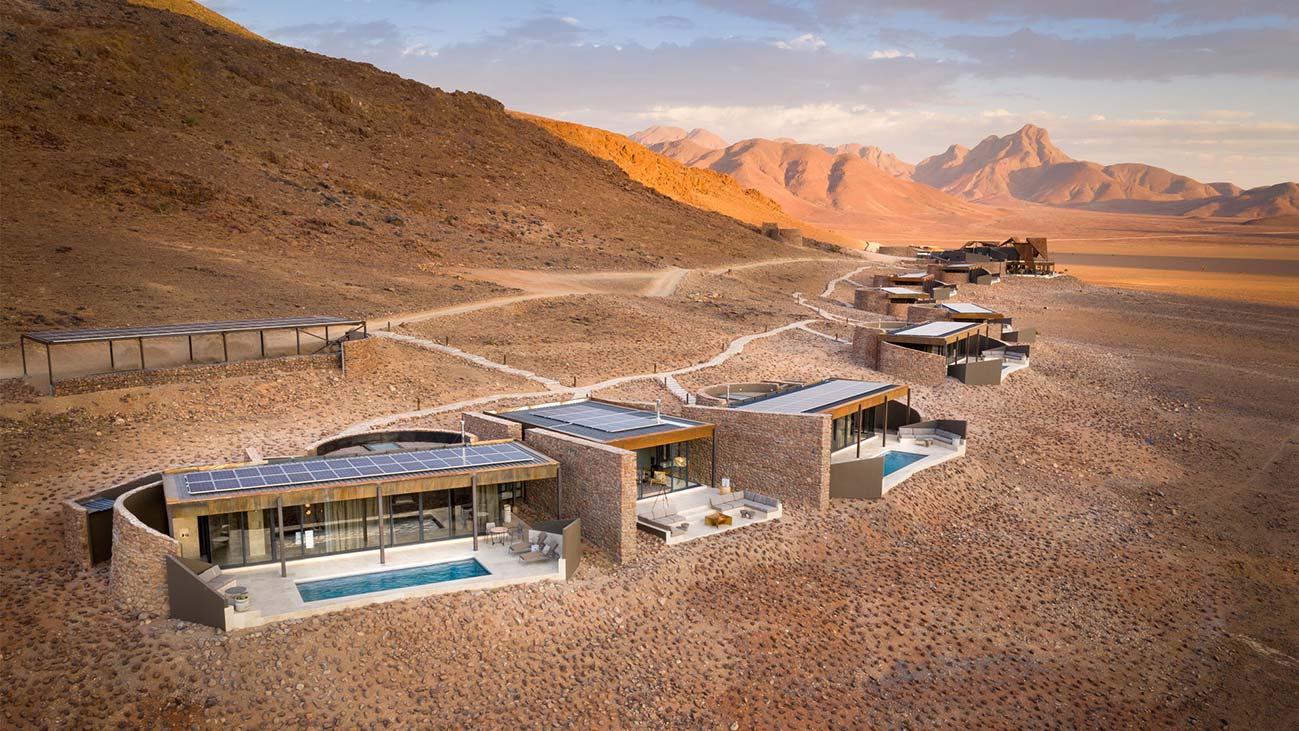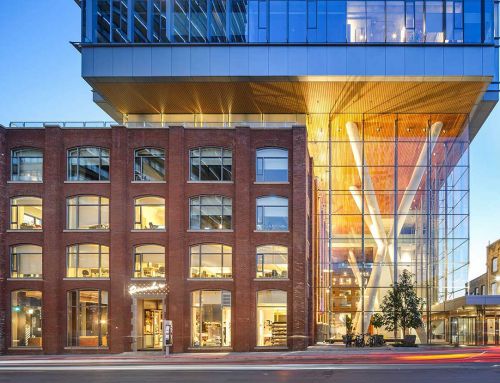Stretching some 2000 km along the Atlantic coast of Namibia in southern Africa, is one of the wonders of the world: the Namib Desert. The term Namib means in the Nama language, according to different sources, “huge place” or “area where there is nothing”; also known as the Namib Sand Sea, it is considered the oldest desert in the world, having faced arid or semi-arid conditions for millions of years, (with the only dispute for this title being the Atacama Desert); in particular, geologists say it was born during the latter part of the Mesozoic era and existed for virtually the entire Cenozoic era, between 55 and 80 million years ago. UNESCO included it on the list of World Heritage Sites in 2013. This is precisely the unrivalled setting in which the resort we have selected from among the world’s hotels to feature in this space, is located: the Sossusvlei Desert Lodge, part of the &Beyond chain.
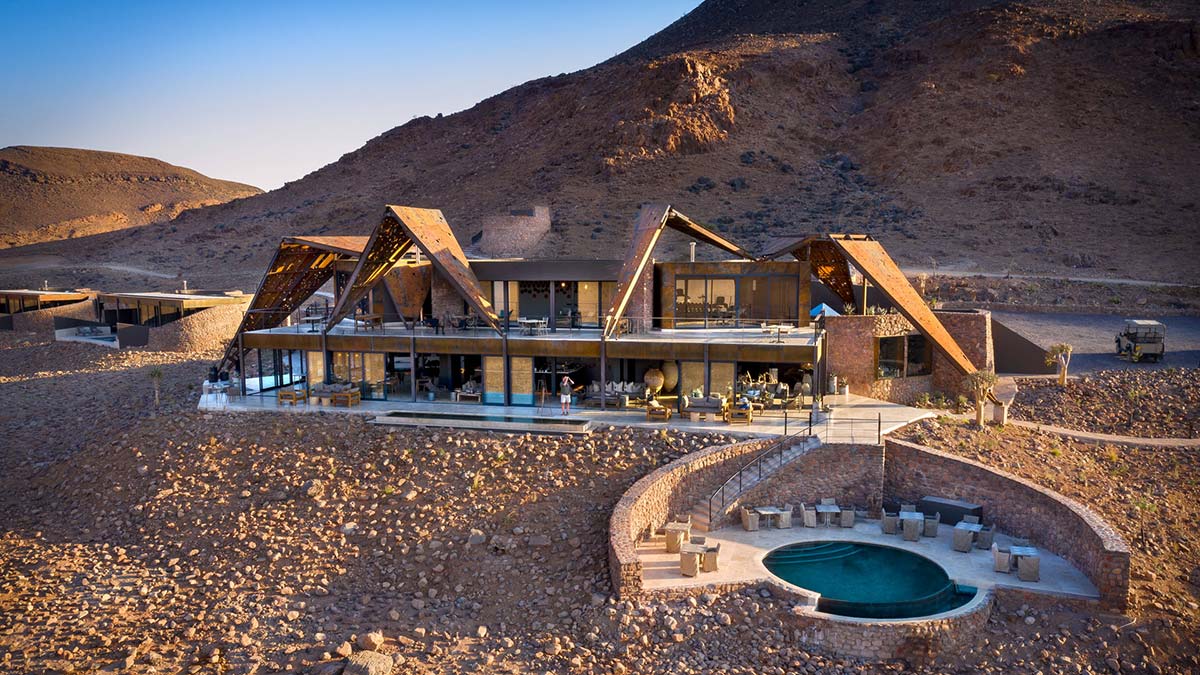
“10 beautifully appointed stone and glass suites, spread out along the curve of the escarpment, open onto ever-changing outlooks” is how the resort’s website describes the core of its hospitality offering to the world, where “sustainability and uncompromised luxury go hand in hand”. In addition, all suites feature air conditioning, “a secluded, shaded veranda“, swimming pool, fireplace and a retractable skylight over the bed for stargazing.
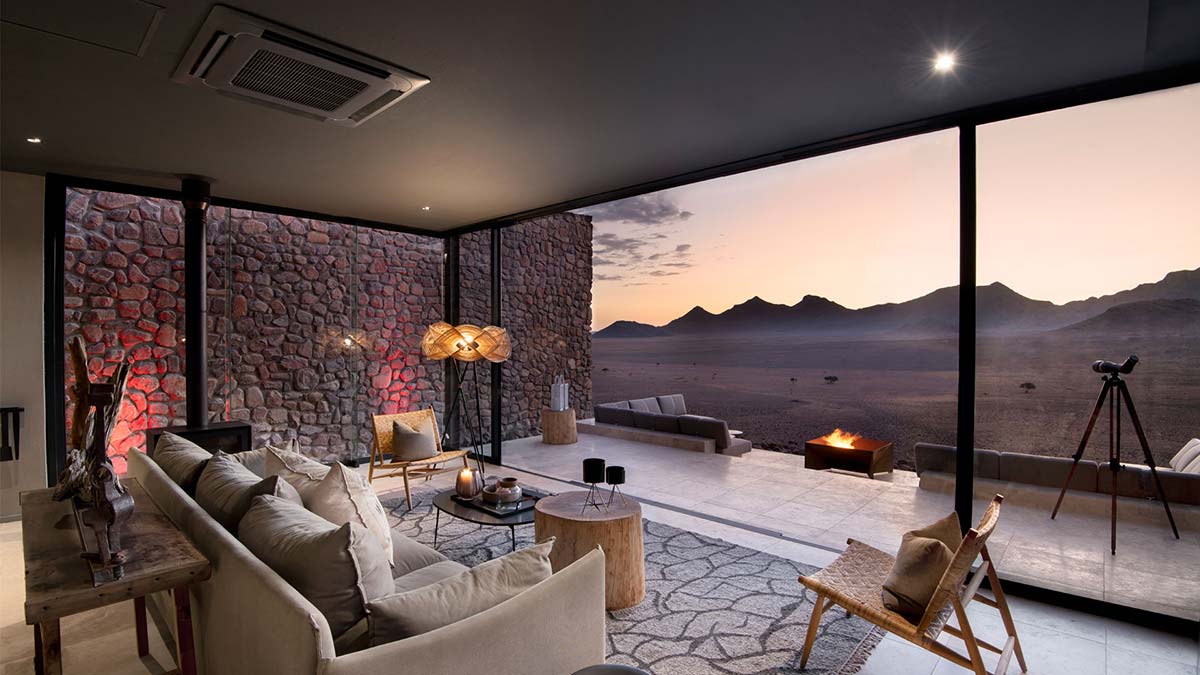
In fact, DarkSky International, an international association whose mission is to “restore the nighttime environment and protect communities and wildlife from light pollution“, has designated the NamibRand Nature Reserve (a private reserve for the conservation of the environment and biodiversity), adjacent to the Sossusvlei Desert Lodge resort, as an “International Dark Sky Reserve“, the second site on the planet and the first in Africa to be designated as such in the “gold” category because of its “exceptionally dark skies”.
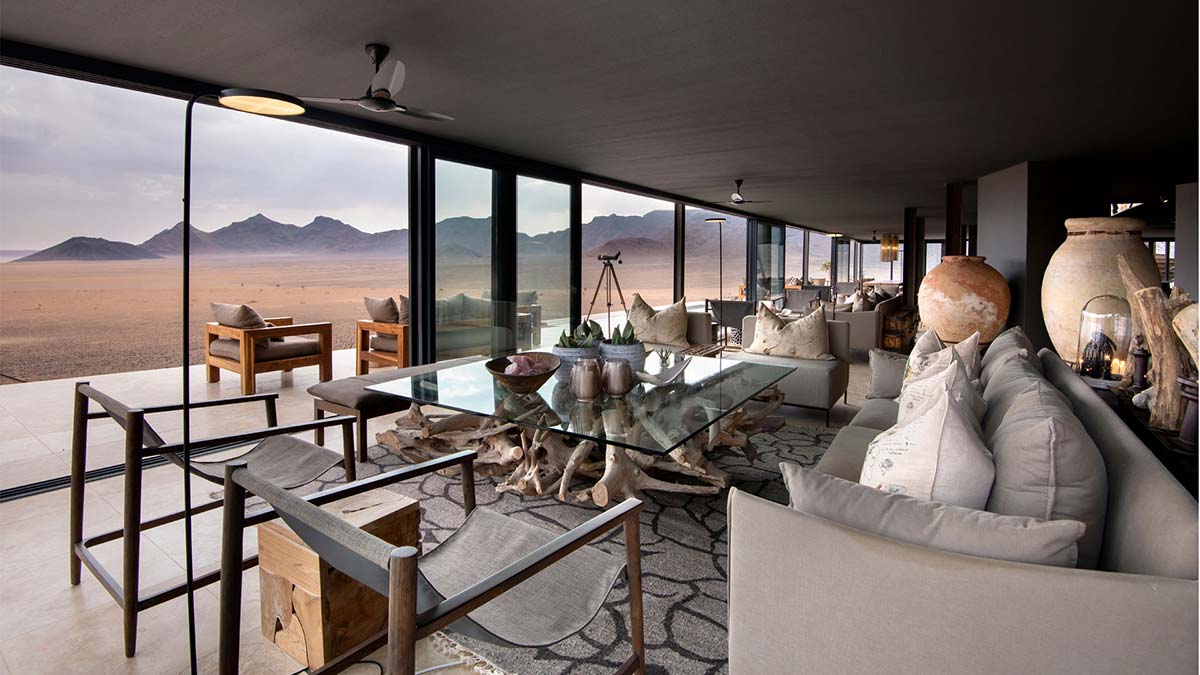
With regard to the architecture of the Sossusvlei Desert Lodge, and from a general point of view, we must point out the sobriety of the complex and the simplicity of its design. Therefore, while functionality and efficiency are the main features of the buildings’ vanishing lines in an architectural discourse that avoids decorative grandiloquence, only in the “guest area“, where the bar, restaurant and other communal facilities are located, is a slight flight of fancy allowed, in “an inspired masterpiece of glass, rock and steel”. This space, the only one with two heights, is protected from the sun’s penetrating rays by a series of perforated pre-oxidised steel “sails”, “positioned to follow the course of the sun”, so as to “create cool, intimate spaces of dappled light and shade“.
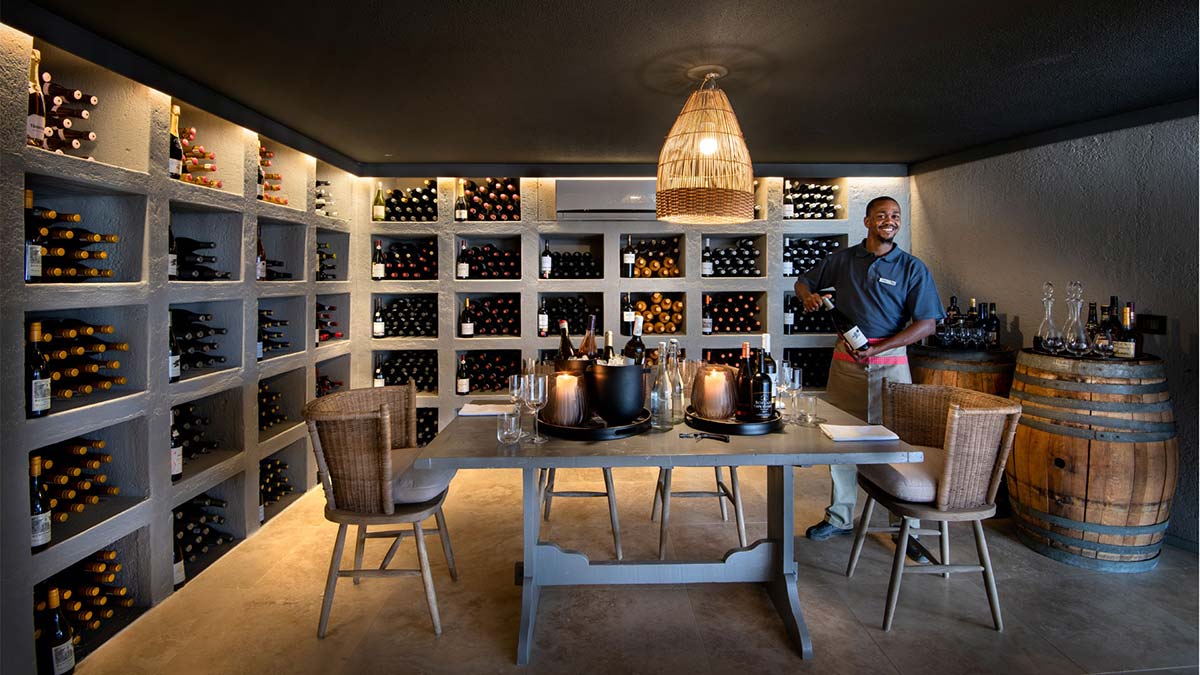
Finally, with regard to the sustainability that Sossusvlei Desert Lodge proudly proclaims, on the one hand we have to talk about its construction. Indeed, the use of local, natural materials such as stone and sand is already a factor in reducing its carbon footprint. It also serves to blend the buildings, as if they were mimetic creatures of the savannah, with the dunes and gravel plains of the Namib. On the other hand, the resort takes advantage of the “climate of extremes” to produce the energy it needs by means of solar panels. As such, the air conditioning, hot water, water treatment and recycling systems and even the rainwater harvesting tanks are solar-powered.


You can enjoy moving views of the Sossusvlei Desert Lodge in this VÍDEO.
Sources: Sossusvlei Desert Resort, Wikipedia, NamibRand, DarkSky. Images: Sossusvlei Desert Lodge.
RELATED STORIES
Newsletter

